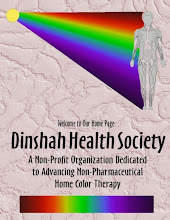 Grilling, Gurgling, and Gulping: Top 8 Summer Foods for Men
Grilling, Gurgling, and Gulping: Top 8 Summer Foods for Men(1) Spice up meats – Did you know that spicing up your meat can protect you from toxic compounds formed during cooking? A recent study by Dr. Li and fellow researchers ( May 2010) demonstrated that adding a spice blend to hamburger meat before cooking resulted in a 71% decrease in a toxic compound that promotes cancer and heart disease. This blend contained eight different spices, primarily ground

paprika, oregano, garlic, and ginger. Two other potent spices, black pepper and curry (turmeric) have amazing effects in the body. Black pepper contains a compound (called piperine) that helps nutrients to be absorbed in the intestine. And curry has healing properties throughout the body, including the brain, where it has been shown to reduce the accumulation of beta-amyloid (accumulation of beta-amyloid is one of the hallmarks of Alzheimer’s disease).
(2) Turn down the heat! – High-heat can lead to setting the body on fire – inflammatory fire, that is! High-heat cooking promotes the formation of harmful substances known as Advanced Glycation Endproducts (AGEs) which have been associated with inflammation, diabetes and cardiovascular disease. A study by French

researchers published in May this year showed that eating high-heat cooked foods resulted in less sensitivity to insulin, lowered body omega-3 fats, and increases in cholesterol and triglycerides compared with eating mildly steamed foods. The acronym says it all – “AGEs” age you! Try to stay young, fresh, and vital with lightly steamed, poached, and raw foods.
(3) Choose fish first – Compared with beef and other land meats, certain fish contain higher amounts of the anti-inflammatory omega-3 fats. These fats are used throughout our bodies, and are especially beneficial for the brain and heart. Just one serving per week compared with no fish consumption resulted in a 12-13% lower risk for coronary calcification, a marker associated with atherosclerotic plaque (Heine-Bröring et al., AJCN, 2010). Additionally, with the brain being 60% fat, it is important to ensure that healthy fats are swimming their way into your brain matter, keeping your thinking sharp and your mood pleasant. The American Heart Association recommends two servings of fish per week.
(4) Cool down with leafy greens – With summer gatherings comes fresh salads, a perfect dish for getting a variety of high-color-powered phytonutrient vegetables like cherry tomatoes, carrots, cucumbers, delivered on a bed of cooling greens. Deep, luscious leafy greens like spinach, arugula, and mesclun are rich in folate, an essential nutrient for keeping down blood levels of homocysteine, an amino acid associated with inflammation and cardiovascular disease risk.
(5) Reduce your grip on the salt shaker – Salt is sprinkled on so many processed summer foods, including chips, bread, lunch meats, and cheeses. Too much salt can lead to high blood pressure and heart disease risk in sensitive individuals. Aim for fresh, home-cooked meals where you can control the amount of salt that goes into your dish. And, choose coarse sea salts in place of refined salts for their additional contribution of minerals. For healthy young adults, keep sodium

consumption between 1,500 and 2,300 mg of sodium a day, and if you have high blood pressure, are middle-aged, or are African-American, stay at the low end of that range. If you choose for high-salt, processed food items like packaged grains or prepared frozen dishes, add vegetables and non-salted substitutes to dilute the salt load.
(6) Go for the green – tea, that is! – Instead of beer, try an alternate drink that tastes good and has health benefits – green tea. Iced green tea can be made by steeping several tea bags in a gallon of distilled water in the warm sunlight. Add lemon to make it even more refreshing. The best part is that green tea contains active compounds to assist with burning calories. In a study with animals

predisposed to becoming obese, feeding decaffeinated green tea resulted in less weight loss and better blood fat levels than placebo (Richard et al., Pharmacol Res., 2009).
(7) Color your world red – A group of Harvard researchers compared men’s incidence of prostate cancer with that of their consumption of tomato products, which contain the red-colored plant compound, lycopene. They found that men who consumed more tomato products had reduced prostate cancer, especially when they consumed tomato sauce (higher amounts of bioavailable lycopene) (Giovannucci et al., J Natl Cancer Inst. 2002). Aim for 10 servings of a variety of high-lycopene containing foods per week (tomato sauce, watermelon, tomato soup, whole tomatoes, ketchup, salsa, pink grapefruit, sweet red peppers). Additionally, lycopene-rich foods are important for reducing cardiovascular disease risk.
(8) Don’t get “snowed-in” by sugar – Studies have indicated that consumption of nutrient-poor, high-sugar soft drinks leads to obesity. Sugar is an addictive substance and having a little can lead to being hooked by the intensity of flavor. When the blood sugar spikes, it causes high amounts of insulin to be released,

almost like the ups and downs of a rollercoaster. Over time, this process causes a metabolic disturbance known as metabolic syndrome, which can be high blood fats (triglycerides), high blood pressure, elevated blood sugar, low “good” cholesterol, and increased belly fat, ultimately leading to greater risk for chronic conditions like type 2 diabetes and cardiovascular disease. Instead of sugar, stick to fiber-rich foods that keep your blood sugar balanced, your appetite healthy, and your

energy high! Great fiber-rich foods are legumes, fruits, vegetables and whole grains (instead of white rice, choose brown rice!).
©Deanna Minich, PhD, CN
http://www.foodandspirit.com/

























